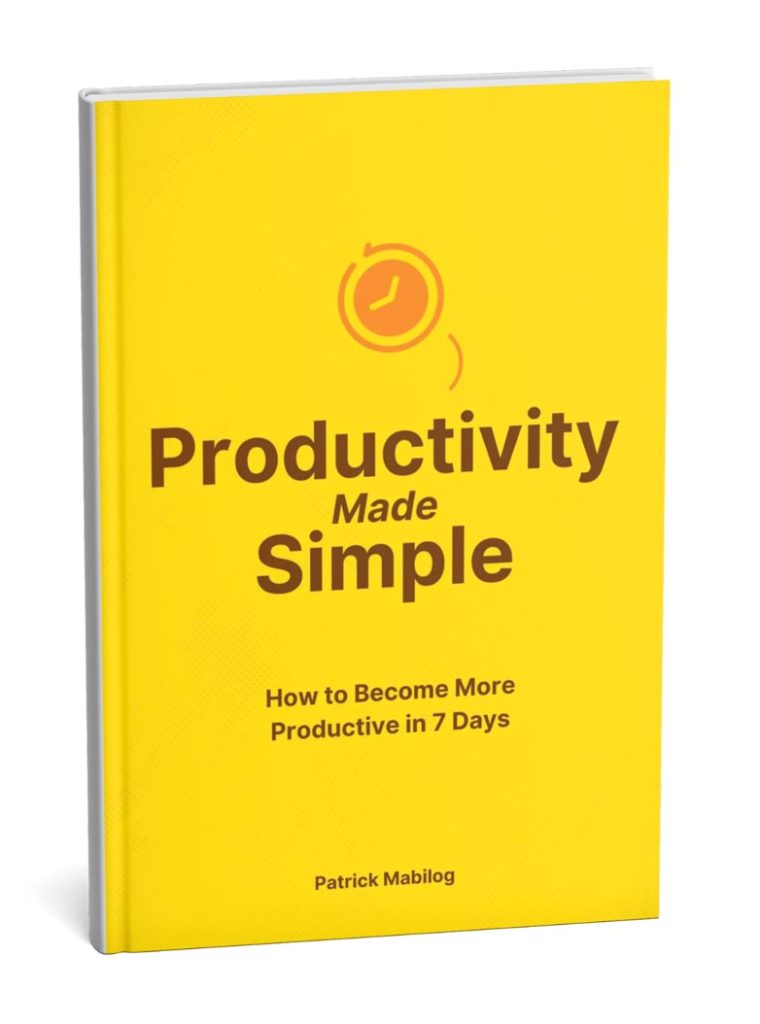The COVID-19 pandemic has been going on for almost two years now. And while the health crisis has been overwhelming, there’s another crisis that has been sweeping the world— a mental health one. With isolation, anxiety, fear, and constant change happening all the time, people worldwide are struggling with burnout. One of the most common forms is work from home burnout.
The virtual work revolution has brought all kinds of wonderful benefits. Many people who work remotely save time and resources from having to go back and forth in the office. It has brought a better sense of productivity for some. One study shows that people who work virtually are 47% more productive because they have lesser distractions.
But working from home isn’t all a bed of roses. It comes with its own sets of challenges as well. For one, it’s harder to set boundaries between work and home since everything now happens in one place. We end up working until 12:00 midnight (or even later), laptops on our beds while we “catch up” before bed time. There’s also the growing problem of isolation, especially for those who live alone. It’s no wonder why 69% of people experience burnout when working from home.
So how does one know if you’re already experiencing remote work burnout? Here are some work from home burnout symptoms according to the Ada that you should be on the watch out for.
- Anxiety
- Headaches
- Lack of sleep
- Fatigue
- An increasingly cynical outlook on life and work
Of course, there are more symptoms as well. No two cases of burnout are ever the same. If you want to study burnout from a medical sense, then I highly recommend reading this article from Mayo Clinic.
Why Burnout is Such a Problem
So why is it important to combat work from home burnout? I’ve come to realize that there are two overarching reasons why— it ruins the quality of our work and life.
It ruins the quality of your work
When we’re burnt out, we’re extremely defocused, tired, and unproductive. We keep pushing ourselves to the limit, but there’s a rate of diminishing returns on our output. The content we create isn’t as good anymore. Our balance sheets aren’t as spotless. Our meetings aren’t as focused. The next thing you know, you’re making more mistakes and fumbling more important deliverables.
It’s funny how we sometimes think that we can just keep running on fumes no matter how tired we are. I know I’ve made that mistake many times. Burnout hurts our work output.
It ruins the quality of your life
Not only does burnout ruin our work. It ruins the rest of our lives as well. The pandemic amplified remote work burnout as we were separated from family and friends by stay-at-home mandates for long periods. At the height of the first Philippine lockdowns, Ces and I were separated from our biological families for several months. It was hard, and it took a toll on us.
Burnout can ruin relationships, mental health, physical health, spirituality, and many other aspects of our life outside of work. Because of that, WHO has started to “embark on the development of evidence-based guidelines on mental well-being in the workplace.” So, the point is that burnout is serious, and we need to find ways to deal with remote work burnout and fatigue.
Can I Really Beat Work From Home Burnout?

A few years ago, I wrote a book called “Break: Conquering Burnout with Sabbath Rest.” It was my first book so I didn’t think it would do so well. Now, there are thousands of copies of this book around the nation and world. People send me messages all the time about how timely my book is. Who would have thought that a twenty-eight-year-old workaholic would be onto something?
Now, the question people have in their minds is “can I really beat virtual work burnout?” and to that, I say yes. It’s not impossible. But it’s not easy as well. There are many things that we have to learn, unlearn, and relearn. But we can start with some small habits that will compound over time.
How to Beat Work From Home Burnout
I talked about work from home burnout in my podcast recently. If you want to listen to that episode, check it out here:
Here are some of the tips that I shared on that podcast too if you’d like to read and learn more about these practices that have helped me and many others to beat workplace burnout, even if you’re just working fro home.
Set goals
The first step to learning how to fight work from home burnout is to set clear and effective goals. Now you might think “well, Kiko, it’s my goals that got me in this rut to begin with,” I would beg to differ. You see, goals aren’t only meant to push you to achieve more. It also teaches you to achieve more by doing less. At work, our problem sometimes stems from the kinds of goals we set.
For one, we set goals that don’t align with our priorities. We spend time on low-output tasks that use up so much time and energy but don’t produce much. Then, there’s also the problem of over-pushing ourselves because “we can.” For instance, we burn the midnight oil on projects because our work is so accessible now that we’re working from home. We also have to learn how to pause when we’ve achieved our goals.
To set effective goals, determine what tasks are urgent and important and then shoot for those. Everything else can wait.
Create boundaries
The next step to learning avoiding virtual work burnout is setting the right boundaries. First off, we need to set boundaries at home by determining which spaces are for work and which ones aren’t. After years of working from home and missing out on this important step, I learned from my mistakes (eventually). So what helped me immensely was creating an office in my home where I would do majority of my work. Now my man cave helps me be at my optimal best and I upgrade it as often as I can to improve my work. I invest in ergonomic office accessories and set the lighting to help me be productive.
But the moment I leave my home office for a break or at the end of the day, I switch to a different mode. Now, I will admit that I’m not perfect in this area, but I am getting better at it (but my wife always reminds me there’s room for more improvement. And I agree ;D)
Secondly, you also need to set boundaries by learning how to say “no” when you have too much on your plate. Because we don’t have physical offices to interface with, co-workers can tend to keep throwing tasks your way. They have no way of knowing that you’re full because they don’t see you working. To counter that, there are some practices we need to do regularly.
- SHOW people what you’re working on. You can have a project management system where people can see how much you now have on your plate. I like to use Notion to show people how much I already have on my plate.
- SET UP a weekly and daily cadence checkin. This practice is to update people on what you’re doing so they know how much you have going on for you. But don’t make stuff up just to appear busy. Be as honest as possible so we don’t shut down people who need our help too.
- SAY “NO” more. That’s because there are some people who don’t stop asking even though you keep giving (you know who they are!) But that doesn’t mean you can’t say no. Learn to assess the ask and see if it’s feasible for you without ruining your schedule.
Our goal at work should always to do less and still achieve more. Going back to tip number one, focus on your goals and get those done first. When you’re done, you can catch up on more work before you close your laptop for the day, and get into a mode of winding down.
Defer, defer, defer
The last tip to avoiding burnout when working from home is to defer. On another podcast, I talked about “Becoming Productive by Procrastinating.” In that episode, I talked about strategic procrastination, which is something I practice a lot. What I do is defer projects, deliverables, or meetings that aren’t urgent yet.
Here’s a scenario that will illustrate this concept. Let’s say I already have six meetings for the day, then someone asks to meet with me too. Well, if I took up one more and I’m already full for the day, then I tend to overwork myself. But the next day, I only have one meeting, and the meeting isn’t really urgent anyways so it can wait. So the more productive thing to do is defer that meeting to tomorrow. Not only do you save time, but you also do that person a great service by ensuring that you’re optimal best by the time you start your conversation.
Work From Home is Good— If We Master It
Let’s get the record straight— Work from home arrangements are not bad! In fact, 58% of professionals prefer work from home set ups. But getting used to this new reality means we also have to learn how to beat work from home burnout. Hopefully, this article will help you get started on that journey. If you want to learn more, then check out more tips by subscribing to my podcast, “Workaholic,” or check out out other blogs under the work category.
Together, let’s escape burnout and experience growth, while working from home in our pajamas!





